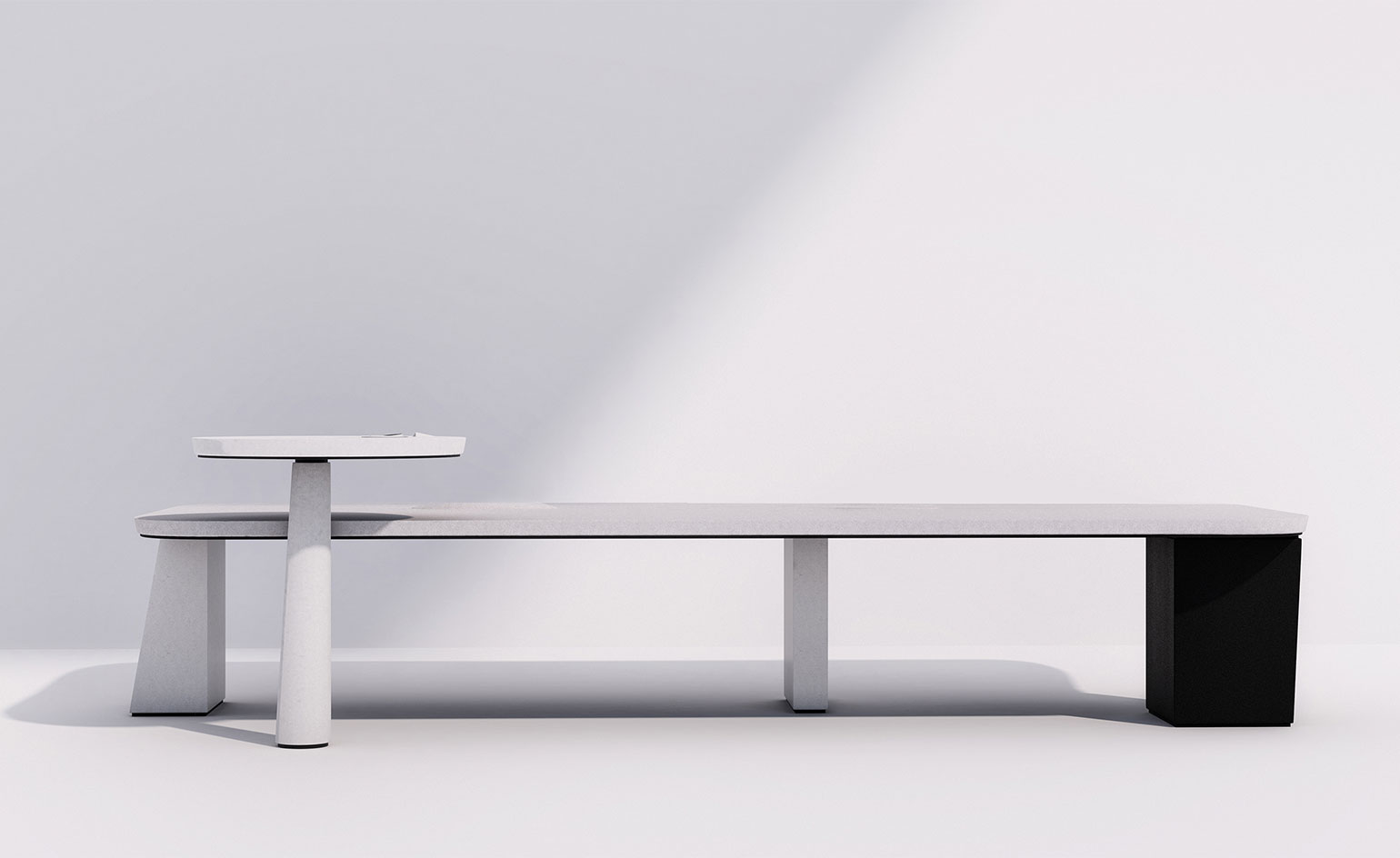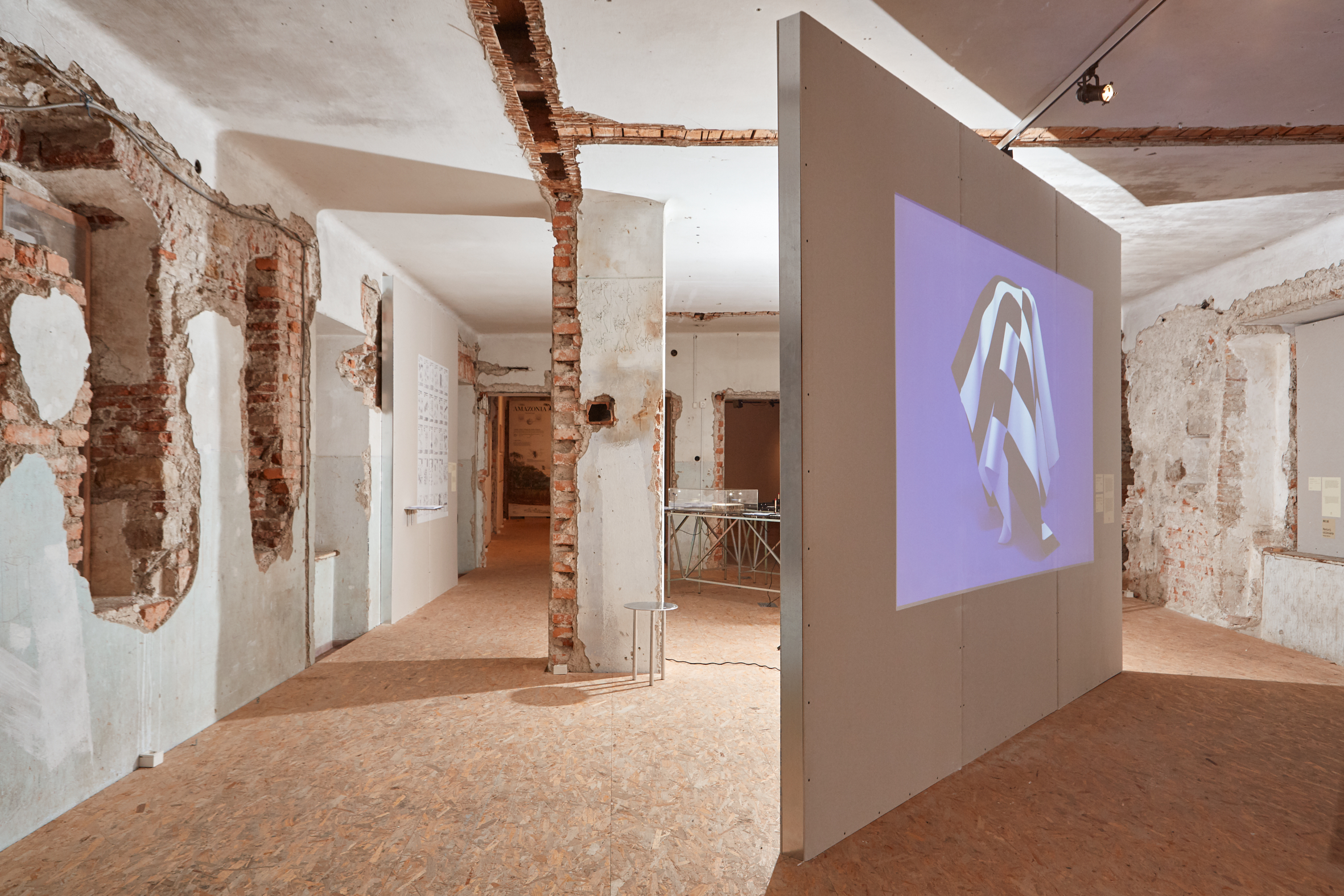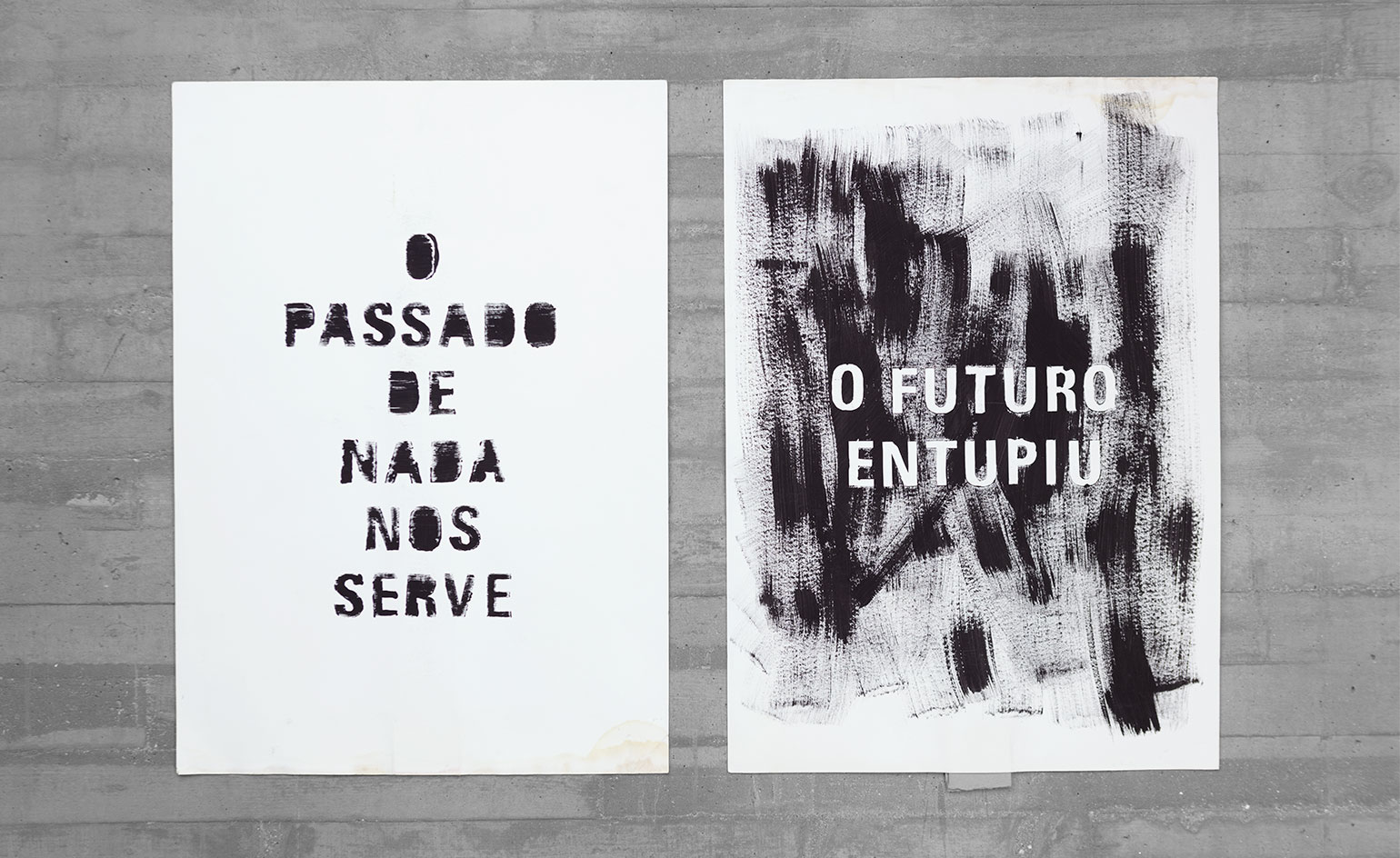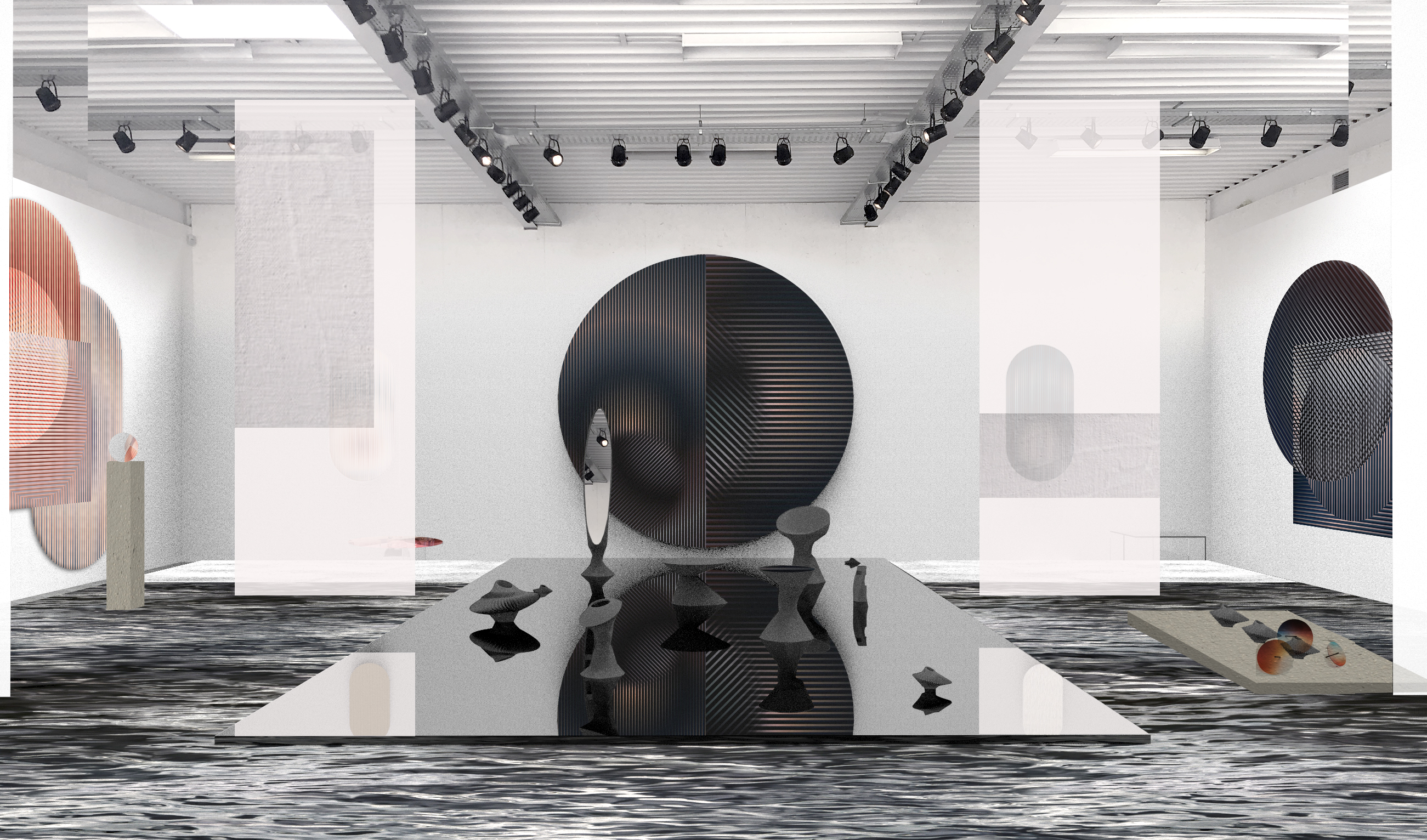It’s all about mineral activity at Amman Design Week 2019
The third edition of the fair comes to life inside schools, art foundations, abandoned 20th-century buildings and more

The third edition of Amman Design Week breaks many moulds. Under the heading ‘Possibilities,’ this is is not a generic display of design that may appear anywhere, or that may make a difference pragmatically reshaping the world through commercial offerings – there is no truly commercial arm to the fair. There are no professional ‘buyers’ as such. It is a journey of thought and process, a ‘celebration of the fictional, incomplete and unresolved’.
Amman Design Week is a caravan in itself and its execution and purpose is highly considered by its director, Rana Beiruti, and by curator, Noura Al Sayeh-Holtrop. Its heart is at the Ras El Ain district, but the showcase takes place city-wide in schools, art foundations, and within glorious abandoned 20th-century buildings. The crafts district at Kabariti village exposes a wealth of traditional weaving and dyeing methods cultivated mainly by women and fit for contemporary use.

Jordan, translating to ‘up, down’ in Hebrew, is a young country despite its ancient history. A long narrow Arab country at the north bordering Syria — Damascus is just above — and not quite landlocked. There is the Dead Sea west of Amman, mineral rich, which is reducing by 1 metre each year, and the port of Aqaba to the south, an ancient trading post. Jordan borders five countries including Saudi Arabia and Iraq but its commodities differ. Jordan exports primarily phosphate and potash, both fertilisers, and the importance of sustainable exploration into food is evident in the comprehensive exhibition entitled ‘Future food/ Future city’ by Machiel Van Nieuwenhove. Here, the processes of hydroponics, aquaponics and aeroponics are detailed by active interfacing. A lemonade stall, a relief from the heat, has abundant lemons and mint growing on its roof.
The first striking impression of Jordan and its Design Week is the understanding of the terrain itself. There is no gas and oil, there is no timber industry, nor steel for that matter, so the discussion is not about materiality. There is no wooden furniture in this show but rather stone, concrete, ceramics – more ‘minerality’ which shows its face as we trek through the oeuvre on offer. Soil is the medium —the word exchanged at times with ‘sand’ – this is dampish sand, and it is ubiquitous. There are seven kinds of soil.


Above, Designs by Morph-X Design Studio. Photography: Edmund Sumner. Below, Lighting by Farflung
Imported exhibits come from participating countries Palestine, Bahrain, UAE, Lebanon, Egypt, Turkey, Morocco and Kuwait. At the Hangar, at Ras Al Ain, a stupendous and airy 1930s disused industrial building refurbished specifically for the occasion, is the crux of Amman Design Week. Among the frankly massive and luminous pieces was a pen with a nib and an arm that illuminates. The creators of this piece – two young men, one wants to be a lawyer, the other an engineer – explain they wanted to design an object that would enable them to do their homework in their camp (they are Syrian refugees) when the electricity failed. It was a good design because it worked.
Turquoise Mountain is another location worth a visit – a modern gallery and initiative head by American Shoshana Stewart and a permanent fixture embraced by Amman Design Week. The concept began in Afghanistan but now supports infrastructure in four countries including Jordan. I was reminded of the original Conran Shop and its ethos.


Above, designs by Dima Srouji. Photography: Edmund Sumner. Below, design by Georgia Mchaileh
Highlights for me were the blown glass pieces by Bethlehem-based Palestinian Dima Srouji that precisely replicate excavated artefacts, now in the permanent collection at New York’s Metropolitan Museum and Jordan Script Routes, by curator Huda AbiFares which explores the history of written language. In the student section at the Hangar, a fledgling clothing company Makhtoum sees sixteen year old Basem Tash using Hashemite postage stamps as inspiration and motif.
According to the curators of Amman Design Week ‘the future is makeable’ – and without stating the obvious, it is again clear that creativity was not born in a vacuum.
INFORMATION
Wallpaper* Newsletter
Receive our daily digest of inspiration, escapism and design stories from around the world direct to your inbox.
-
 Eight designers to know from Rossana Orlandi Gallery’s Milan Design Week 2025 exhibition
Eight designers to know from Rossana Orlandi Gallery’s Milan Design Week 2025 exhibitionWallpaper’s highlights from the mega-exhibition at Rossana Orlandi Gallery include some of the most compelling names in design today
By Anna Solomon
-
 Nikos Koulis brings a cool wearability to high jewellery
Nikos Koulis brings a cool wearability to high jewelleryNikos Koulis experiments with unusual diamond cuts and modern materials in a new collection, ‘Wish’
By Hannah Silver
-
 A Xingfa cement factory’s reimagining breathes new life into an abandoned industrial site
A Xingfa cement factory’s reimagining breathes new life into an abandoned industrial siteWe tour the Xingfa cement factory in China, where a redesign by landscape specialist SWA Group completely transforms an old industrial site into a lush park
By Daven Wu
-
 Assessing the pitfalls and potentials of the information age
Assessing the pitfalls and potentials of the information ageThe world’s longest running Biennial of Design in Ljubljana questions data, fake news, AI in the post-truth era
By Laura May Todd
-
 Porto Design Biennale evaluates post-millennium creativity
Porto Design Biennale evaluates post-millennium creativityFor the first edition of Porto Design Biennale, curators ask big questions about global issues in locations across the coastal city
By Marco Sammicheli
-
 Designart Tokyo transforms the city into a living, multi-sensory museum
Designart Tokyo transforms the city into a living, multi-sensory museumThe third edition of the fair (18-27 October) showcases over 100 exhibitions across the Japanese capital
By Danielle Demetriou
-
 Dutch Design Week 2019 captures the zeitgeist
Dutch Design Week 2019 captures the zeitgeistWhat to expect from the 18th year of Dutch Design Week in Eindhoven, from social design to sustainable innovations
By Giovanna Dunmall
-
 Ettore Sottsass, colour and architecture at Lake Como Design Fair
Ettore Sottsass, colour and architecture at Lake Como Design FairBy Laura May Todd
-
 Poland’s modernist resort city Gdynia gets experimental with sustainability
Poland’s modernist resort city Gdynia gets experimental with sustainabilityBy Clare Dowdy
-
 Experiments and curious showcases at Design Miami/Basel
Experiments and curious showcases at Design Miami/BaselBy Henrietta Thompson
-
 New Naples fair shines light on independent designers
New Naples fair shines light on independent designersEdit Napoli (7-9 June), curated by Domitilla Dardi and Emilia Petruccelli, opens inside a 13th-century church complex
By Laura May Todd